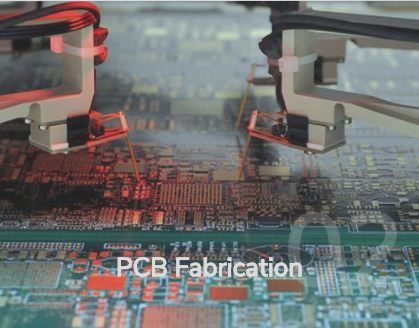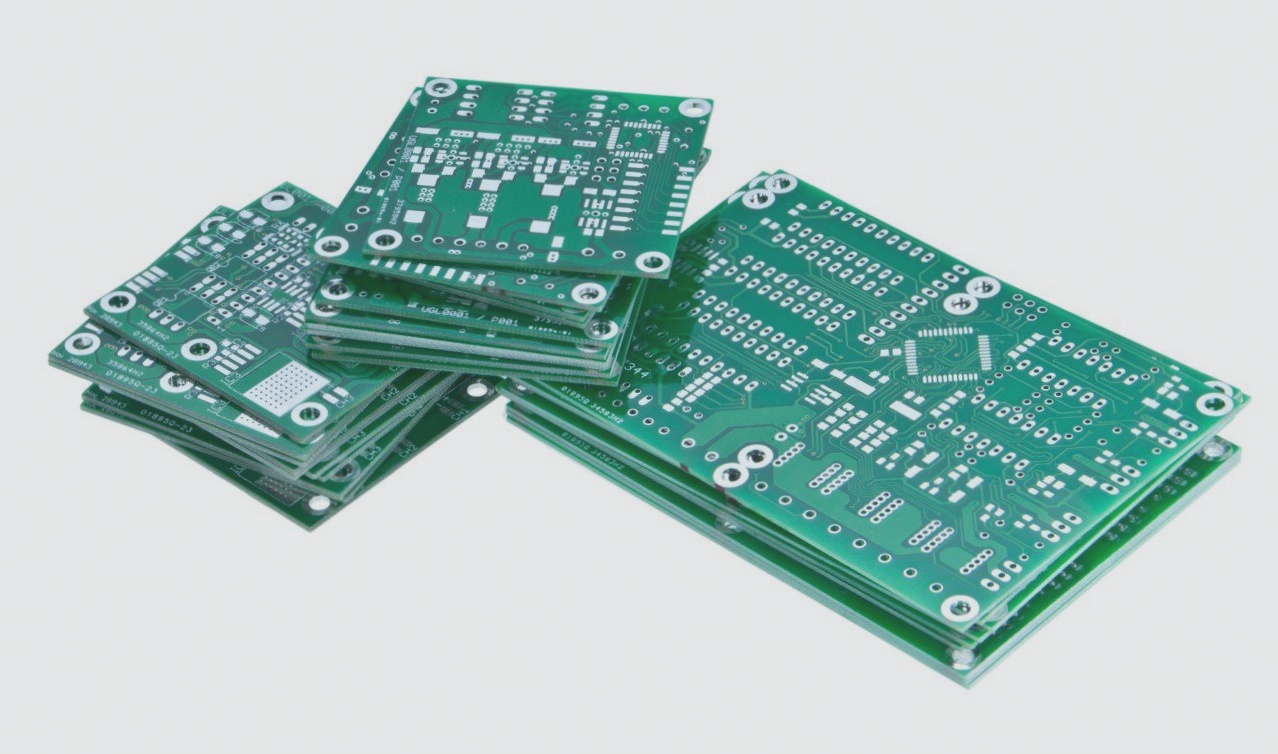1. Aging of solder joints
After fr4 PCB soldering is completed, the crystal structure of the solder joint’s main alloy is not stable and will gradually change over time, increasing to reduce the internal stress caused by various boundaries (usually high impurity concentration, high energy, and poor stability). Even at room temperature, the recrystallization temperature required for common eutectic alloys is exceeded. As the grain size increases and the boundary decreases, the impurity concentration in the boundary also increases. Once 25% of the fatigue life of the solder joint has been consumed, microvoids will appear at the boundary. However, when 40% of the fatigue life is consumed, it will further deteriorate and produce microcracks, making the solder joint even weaker.

CTE mismatch
When the overall thermal expansion coefficient difference (CTE-mismatch) of the three components (pin, solder, pad surface) is significant, the weakening of the solder joint’s strength is accelerated. For instance, the CTE of the ceramic BGA itself is 2ppm/℃, while the CTE of the FR-4 circuit board is 14ppm/℃, making it difficult to achieve a strong welding strength between the two. Local CTE mismatch is also common, such as 17 ppm/℃ for copper, 18 ppm/℃ for ceramics, and 20 ppm/℃ for Alloy42. However, the impact of local CTE mismatch is slightly less than that of overall mismatch. In some cases, even the homogenous Sn63/Pb37 has tin and lead rich areas in its tissue, leading to a 6 ppm/℃ internal CTE-mismatch between them.
Example of failure mode
1) Cold welding
This occurs when the solder paste on the fr4 pcb pad at the base of the ball does not completely fuse with the ball due to insufficient heat during Reflow. The spherical surface will appear rough and granular, and necking may also occur. Generally, the inner ball at the bottom is more prone to cold welding.
2) Lack of tin on the solder pad itself
This refers to the contamination of the surface of the ball pad in the BGA area of the PCB board by foreign matter, preventing the solder paste from reacting with the base pad. This can lead to an open circuit when the solder paste is melted and absorbed by the ball foot. This phenomenon may also be caused by the bending and warping of the carrier plate. When ENIG is used for PCB pad surface, the nickel-charged layer will also present the same adverse situation once black pad disease occurs.
3) Dropping ball
This occurs when the BGA element was not firmly planted before, was reheated during downstream assembly and welding, and was pulled by external force, causing it to separate from its neck due to thermal mechanical stress. However, the foot pad of fr4 pcb is often well welded and less prone to missing.
4) Ball concession
The ball foot was not firmly planted during the ball planting process on the carrier plate, or was later hit by an external force and lost the ball. This disadvantage can be easily found in X-Ray or system or circuit test (ICT), but if it is only used for heat dissipation or common grounding, it does not matter if the inner ball is missing.
5) Carrier plate warping
With the increase in lead-free welding heat in the future, not only will large fr4 pcb’s warp, but the organic carrier plate itself will also experience warping deformation. This will force the abdominal bottom ball foot to fluctuate with height. Although the plate of the carrier plate is Tg180 BT resin, it is quite different from the CTE of the chip loaded in the inner seal. Therefore, when the lead-free heat is excessive, the carrier plate will bend upward, causing the four corners of the ball feet to stretch or suspend. Even if the weld is firmly welded, the welding contact area will become smaller and the strength will be insufficient due to stress and elongation. This makes the designer hesitant to place 1/0 of the ball foot at the four corners. This abnormal phenomenon is most likely to occur in large BGA.
6) Damage caused by external mechanical force
The circuit board often suffers accidental damage during assembly or test, and as BGA becomes larger, the ball foot will also be injured during testing, which will affect the strength of subsequent solder joints. Even after completing the assembly of PCBA, it may still be accidentally impacted by external forces, and sometimes even the copper pad on the surface of PCB will be pulled up and floated away. For safety, bottom glue or corner glue can be used as a security measure, or the area of the corner pad can be increased or turned into an oval long pad. However, implementing this method is challenging when designers only use ready-made commercial software.
7) Insufficient welding heat
When the heat absorbed by the ball in the belly bottom is insufficient, the ball itself cannot melt into liquid, preventing it from properly bonding with the solder paste. As a result, the fr4 pcb shape will not display the normal state of flattening and shortening.
After fr4 PCB soldering is completed, the crystal structure of the solder joint’s main alloy is not stable and will gradually change over time, increasing to reduce the internal stress caused by various boundaries (usually high impurity concentration, high energy, and poor stability). Even at room temperature, the recrystallization temperature required for common eutectic alloys is exceeded. As the grain size increases and the boundary decreases, the impurity concentration in the boundary also increases. Once 25% of the fatigue life of the solder joint has been consumed, microvoids will appear at the boundary. However, when 40% of the fatigue life is consumed, it will further deteriorate and produce microcracks, making the solder joint even weaker.

CTE mismatch
When the overall thermal expansion coefficient difference (CTE-mismatch) of the three components (pin, solder, pad surface) is significant, the weakening of the solder joint’s strength is accelerated. For instance, the CTE of the ceramic BGA itself is 2ppm/℃, while the CTE of the FR-4 circuit board is 14ppm/℃, making it difficult to achieve a strong welding strength between the two. Local CTE mismatch is also common, such as 17 ppm/℃ for copper, 18 ppm/℃ for ceramics, and 20 ppm/℃ for Alloy42. However, the impact of local CTE mismatch is slightly less than that of overall mismatch. In some cases, even the homogenous Sn63/Pb37 has tin and lead rich areas in its tissue, leading to a 6 ppm/℃ internal CTE-mismatch between them.
Example of failure mode
1) Cold welding
This occurs when the solder paste on the fr4 pcb pad at the base of the ball does not completely fuse with the ball due to insufficient heat during Reflow. The spherical surface will appear rough and granular, and necking may also occur. Generally, the inner ball at the bottom is more prone to cold welding.
2) Lack of tin on the solder pad itself
This refers to the contamination of the surface of the ball pad in the BGA area of the PCB board by foreign matter, preventing the solder paste from reacting with the base pad. This can lead to an open circuit when the solder paste is melted and absorbed by the ball foot. This phenomenon may also be caused by the bending and warping of the carrier plate. When ENIG is used for PCB pad surface, the nickel-charged layer will also present the same adverse situation once black pad disease occurs.
3) Dropping ball
This occurs when the BGA element was not firmly planted before, was reheated during downstream assembly and welding, and was pulled by external force, causing it to separate from its neck due to thermal mechanical stress. However, the foot pad of fr4 pcb is often well welded and less prone to missing.
4) Ball concession
The ball foot was not firmly planted during the ball planting process on the carrier plate, or was later hit by an external force and lost the ball. This disadvantage can be easily found in X-Ray or system or circuit test (ICT), but if it is only used for heat dissipation or common grounding, it does not matter if the inner ball is missing.
5) Carrier plate warping
With the increase in lead-free welding heat in the future, not only will large fr4 pcb’s warp, but the organic carrier plate itself will also experience warping deformation. This will force the abdominal bottom ball foot to fluctuate with height. Although the plate of the carrier plate is Tg180 BT resin, it is quite different from the CTE of the chip loaded in the inner seal. Therefore, when the lead-free heat is excessive, the carrier plate will bend upward, causing the four corners of the ball feet to stretch or suspend. Even if the weld is firmly welded, the welding contact area will become smaller and the strength will be insufficient due to stress and elongation. This makes the designer hesitant to place 1/0 of the ball foot at the four corners. This abnormal phenomenon is most likely to occur in large BGA.
6) Damage caused by external mechanical force
The circuit board often suffers accidental damage during assembly or test, and as BGA becomes larger, the ball foot will also be injured during testing, which will affect the strength of subsequent solder joints. Even after completing the assembly of PCBA, it may still be accidentally impacted by external forces, and sometimes even the copper pad on the surface of PCB will be pulled up and floated away. For safety, bottom glue or corner glue can be used as a security measure, or the area of the corner pad can be increased or turned into an oval long pad. However, implementing this method is challenging when designers only use ready-made commercial software.
7) Insufficient welding heat
When the heat absorbed by the ball in the belly bottom is insufficient, the ball itself cannot melt into liquid, preventing it from properly bonding with the solder paste. As a result, the fr4 pcb shape will not display the normal state of flattening and shortening.



